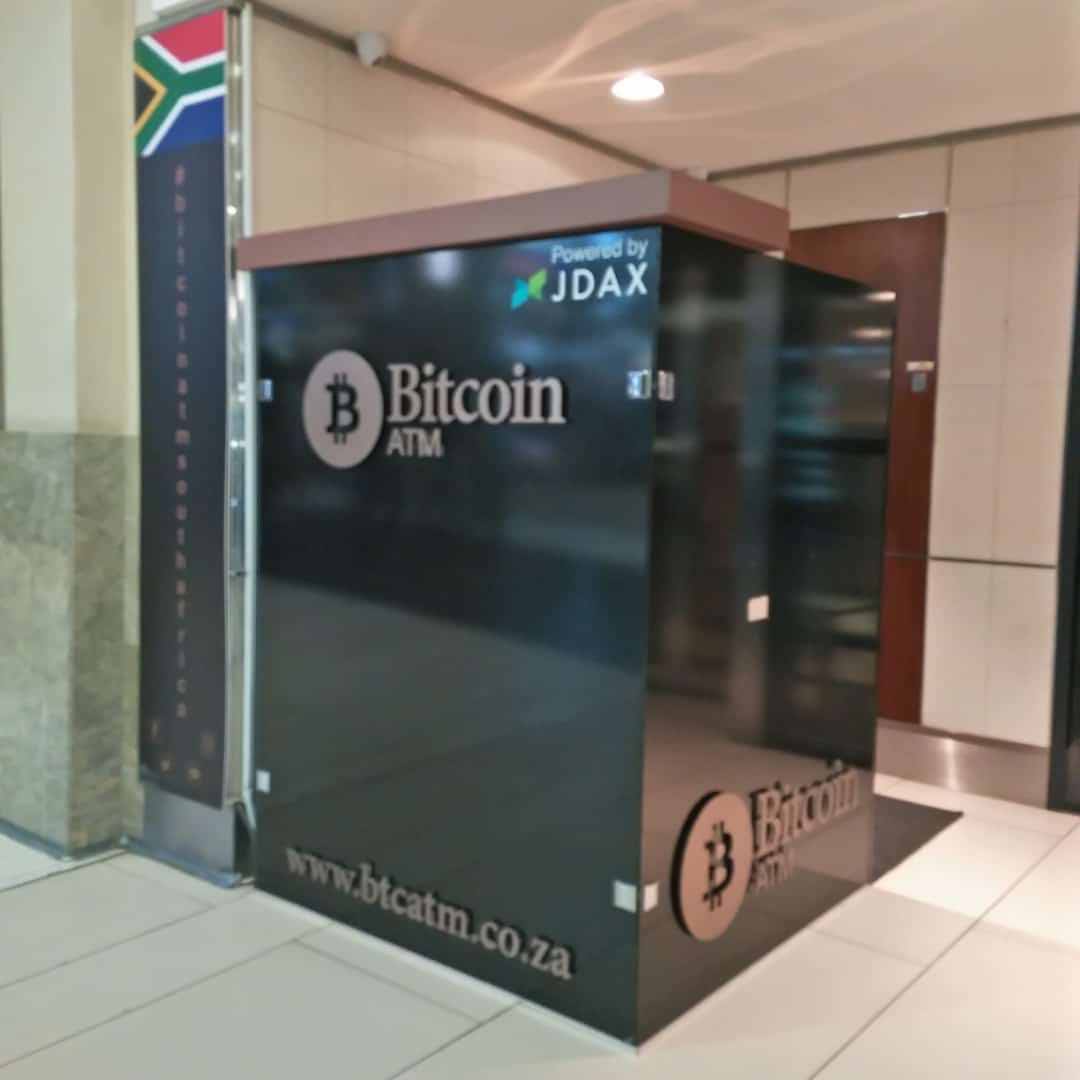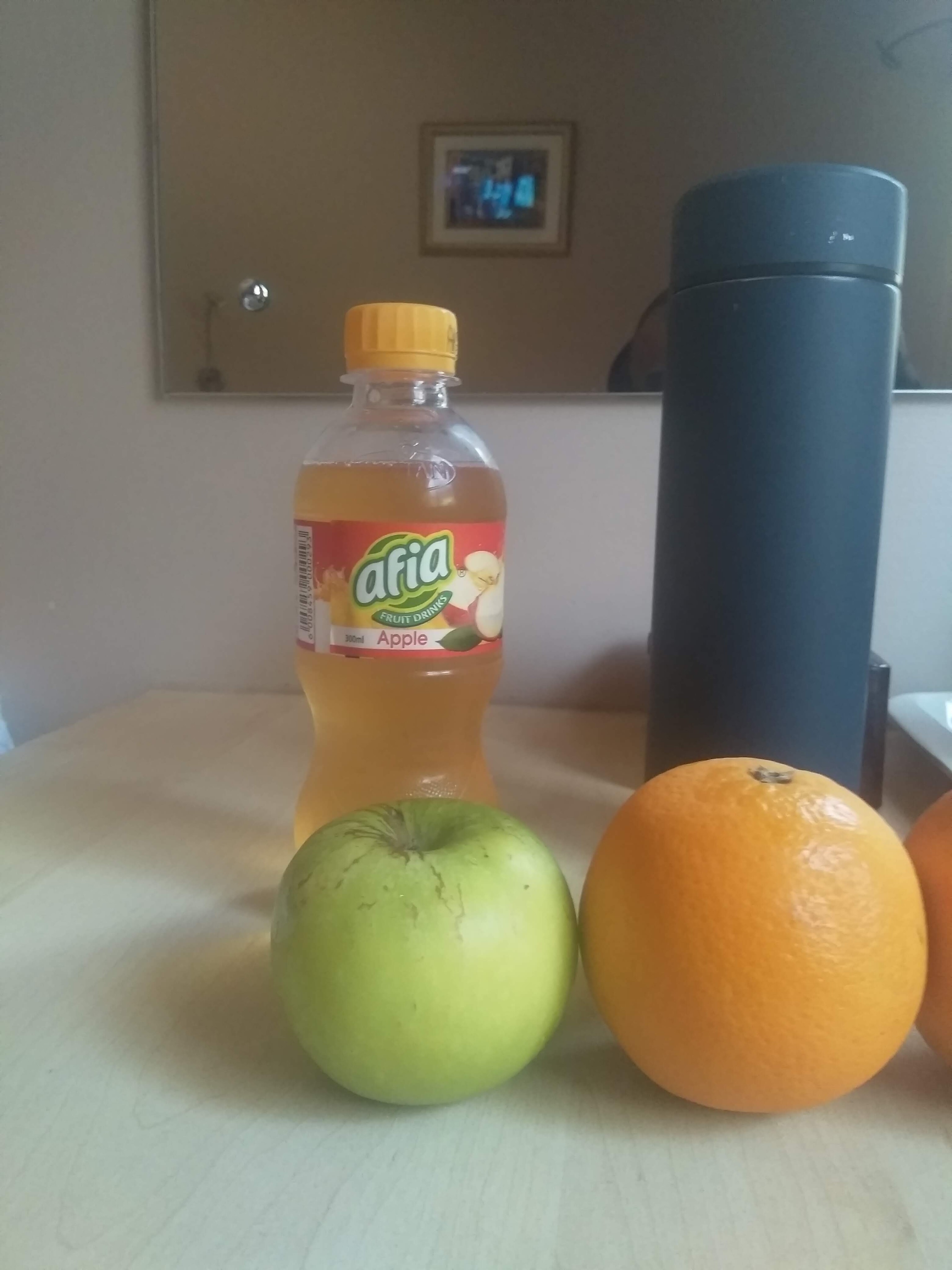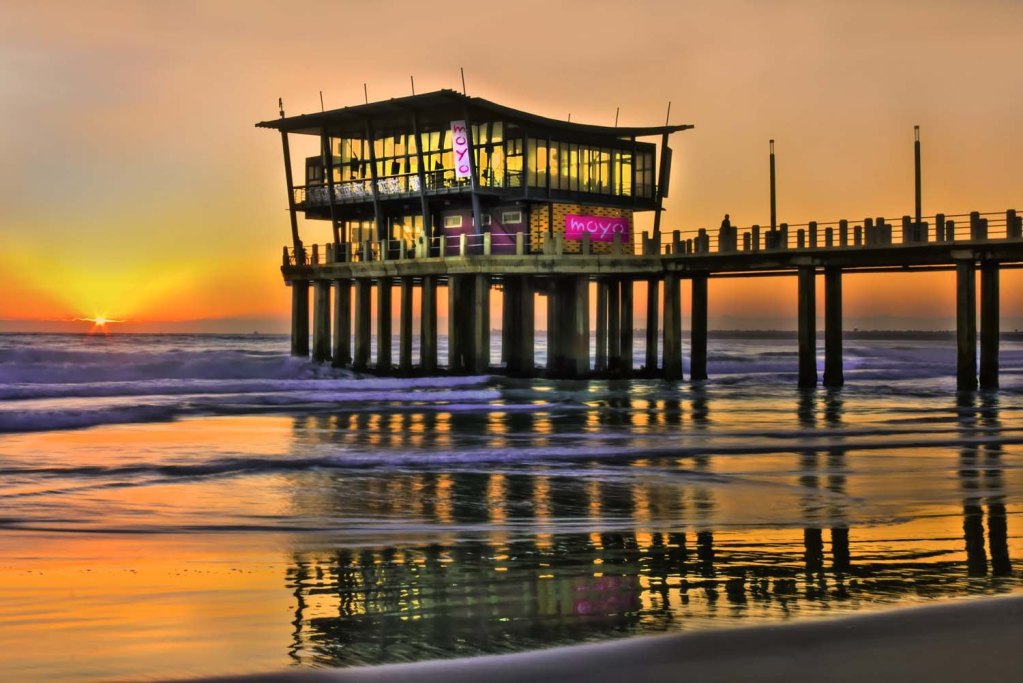Leg 5- Johannesburg – Lilongwe
Our stay in South Africa was over and it was a good one albeit getting to see sides of Johannesburg, that make our very own Kirinyaga Road look super safe and a place one can walk anytime day or night. We were leaving early Sunday morning on a bus to Lilongwe some 1800kms away. We checked out of our hotel Sierra on Mains and ordered an Uber to Park Station. The uber dropped us outside Park Station with our luggage that we then needed to carry across the road to the station. We were taking the Intercape Bus to Lilongwe a Man Irizcar Mainliner built and imported from Brazil. https://www.intercape.co.za/


The boarding process was quite a task as they had one line for everyone who was boarding with luggage that needed to be weighed and paid for taxes and everyone else with personal luggage. After like 20min of waiting we got on board with our luggage and settled down on our seats for the 36hour journey. The seats were super comfortable with USB charging ports, good entertainment, ample space and an airplane styled loo at the very back. We promptly set off on the journey at 8.30am. The bus had 2 drivers one who doubled up as the bus conductor. He came round to make announcements predominantly in Chichewa and for our benefit English since we were from Kenya and he knew no Kiswahili. After a perusal of our documentation, he was concerned that we might need to get a visa for Zimbabwe and Mozambique Entry. We told him according to our research a visa wasn’t needed for both Kenyan nationals. We were to find out that wasn’t necessarily true…
We drove out of Johannesburg heading north towards Pretoria, Polokwane, Musina heading to the Beitbridge Border Crossing into Zimbabwe. Driving north past Pretoria the road/journey was dotted with big large-scale farms and with small townships interspersed in different areas. Polokwane was our first major city after Pretoria and we passed on the outskirts of the city but were able to see the city and the Peter Makaba stadium one of the 2010 World Cup Stadiums. We had Lunch/Dinner at a diner right before Musina and the Beitbridge crossing.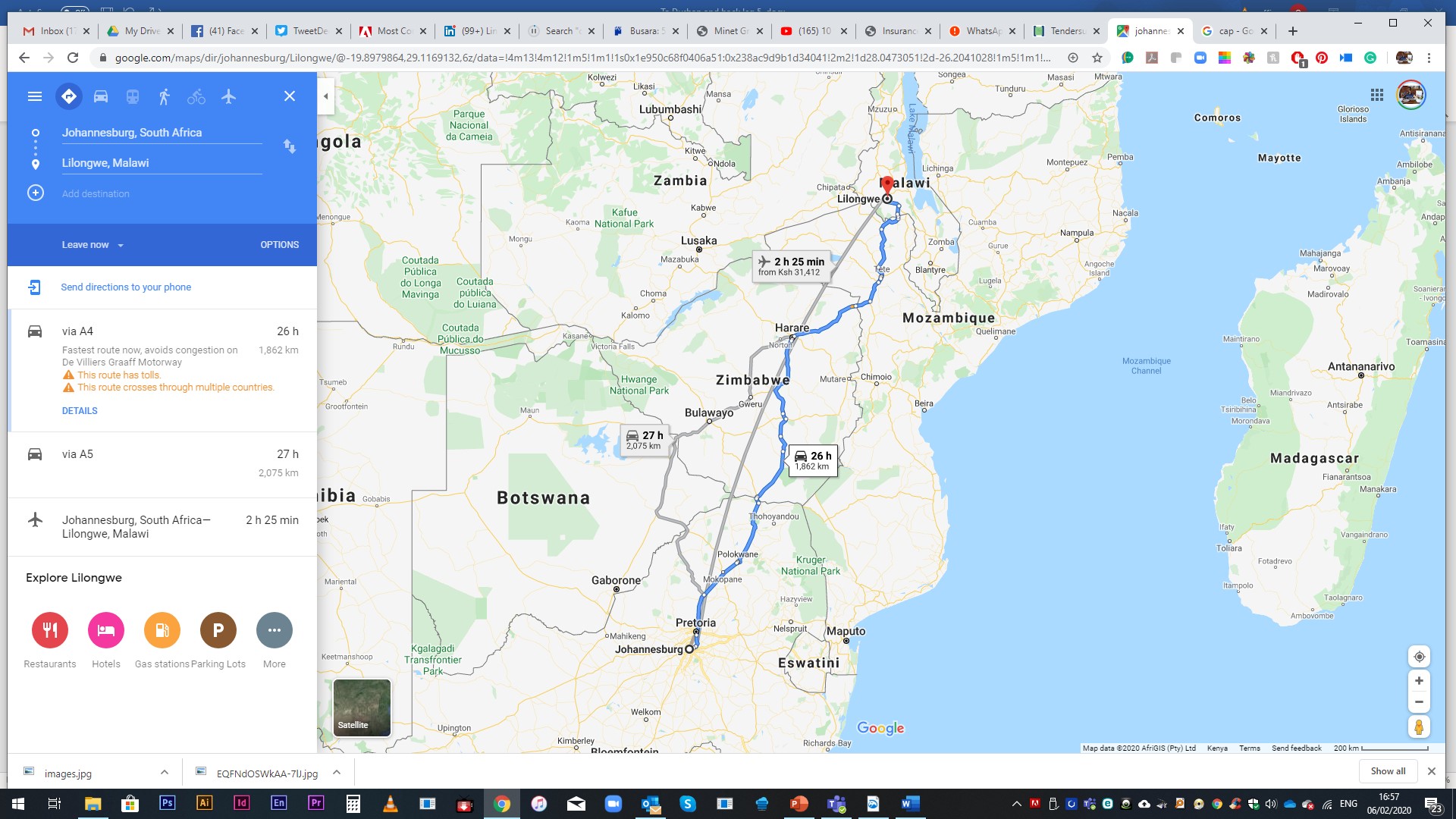
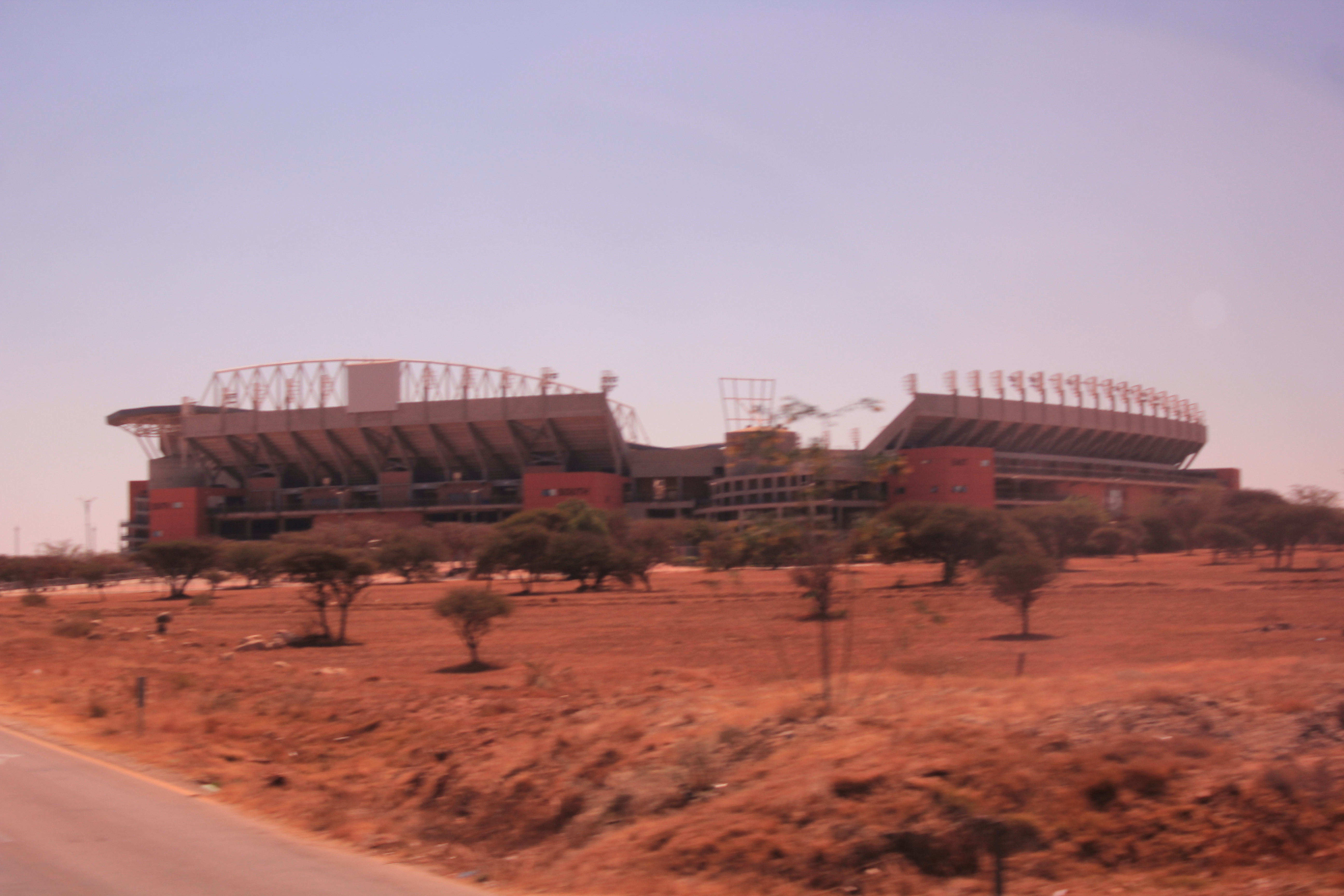

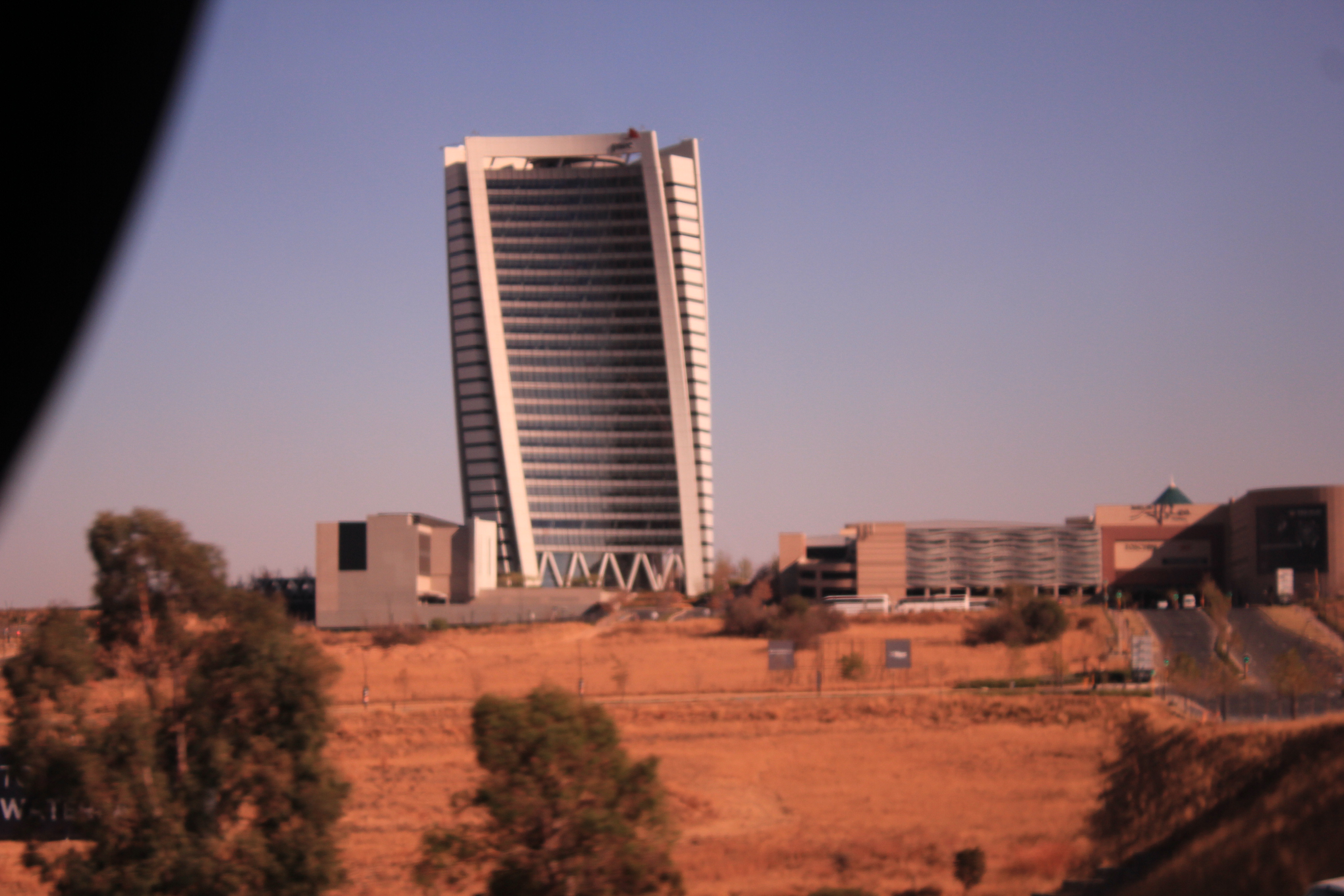


So at Beitbridge, we all left the coach and walked to the South African immigration office to be stamped out of South Africa. The process was quite orderly and, in a few minutes, we were all stamped out. Took another 30 minutes for the bus to be cleared and we did a little shopping and enjoyed the last bits of the sunset. We were then given the all-clear and we got on onto the bus to cross the Limpopo River and into Zimbabwe. I should explain the bus from South Africa comes with a trailer behind it full of goods going into Malawi and the goods sealed in south Africa only pay customs in Malawi. I figured it had something to do with both countries being members of SADC.
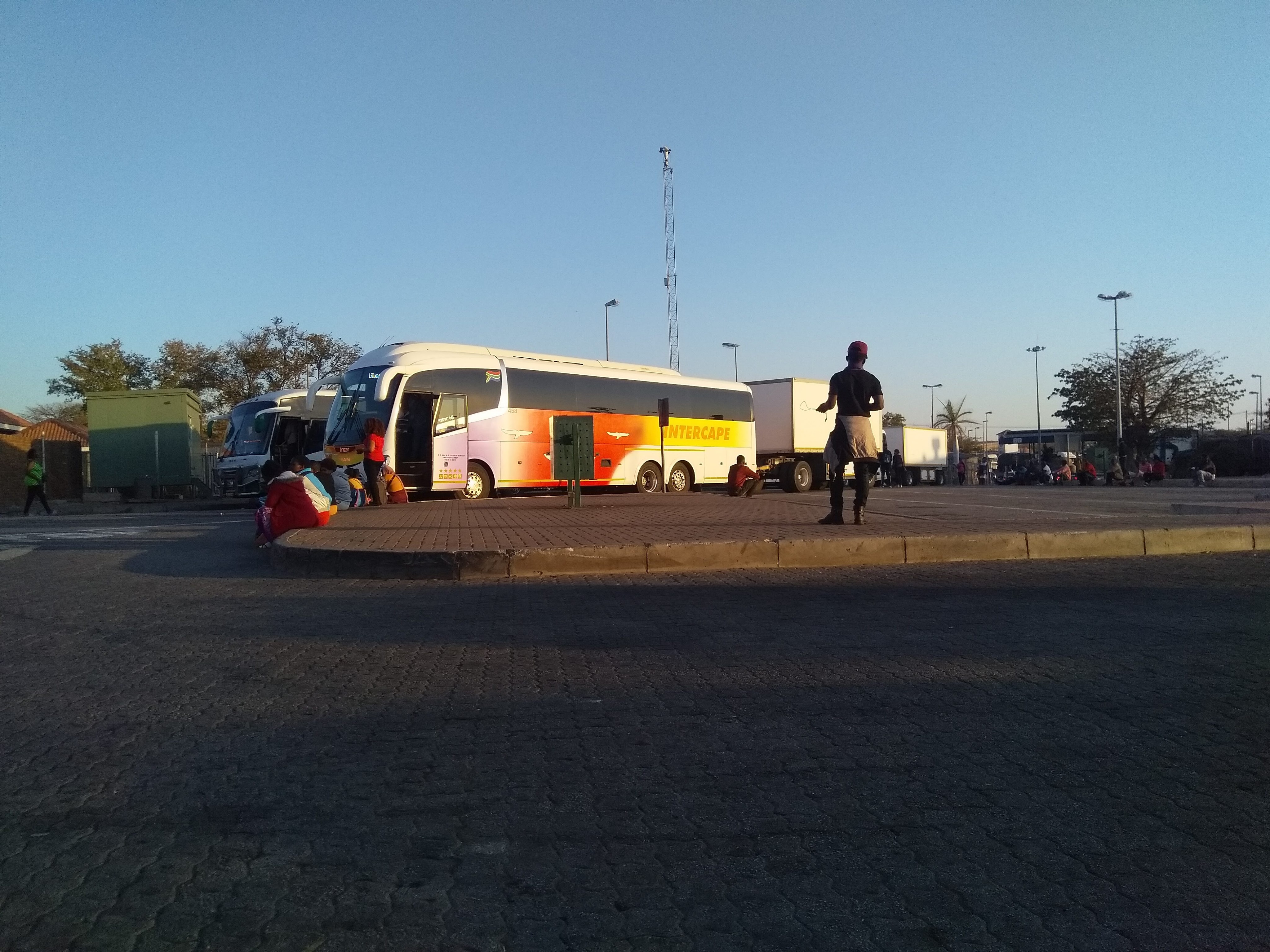
Into Zimbabwe and our conductor was apprehensive that Zimbabwe would insist on us having to get a visa, though our search online indicated differently. Anyway, we all trouped into the Zimbabwe immigration office where we the non-SADC country people had to fill in declaration forms saying how long we intended to be in the country. A week we said and we handed our forms and passports that then were duly stamped. The staff at the immigration centre, though before they stamped the second passport were a bit confused by its appearance. We must have been the first people through that post with the new generation East African Passport which they thought was an ECOWAS passport. Not sure ECOWAS has a regional passport but it did elicit quite the discussion and the boss was called who then was able to inform the frontline staff that was indeed the new generation EAC passport. Fully stamped in we got back to the bus but had to sit outside as it was undergoing inspection.
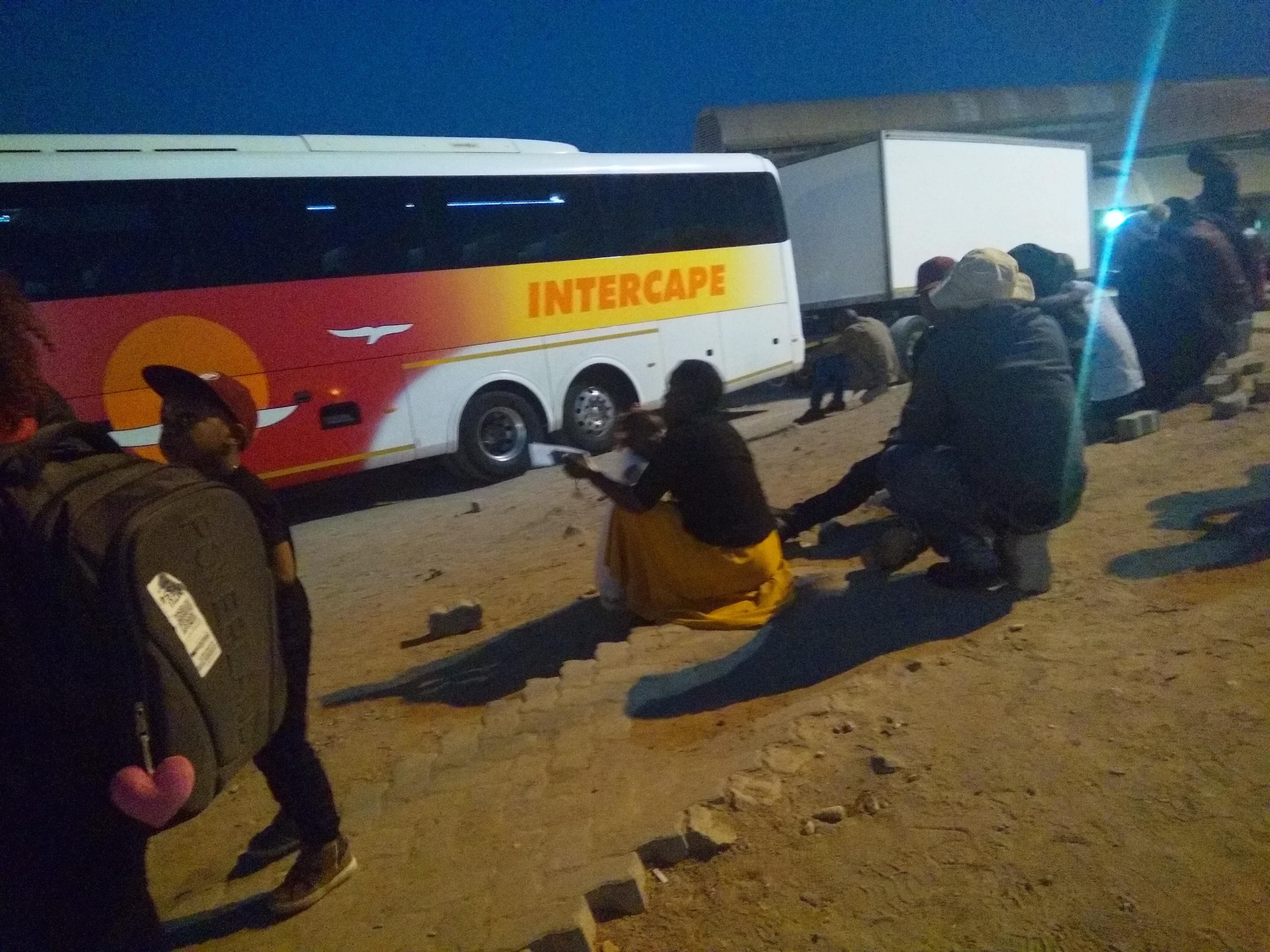
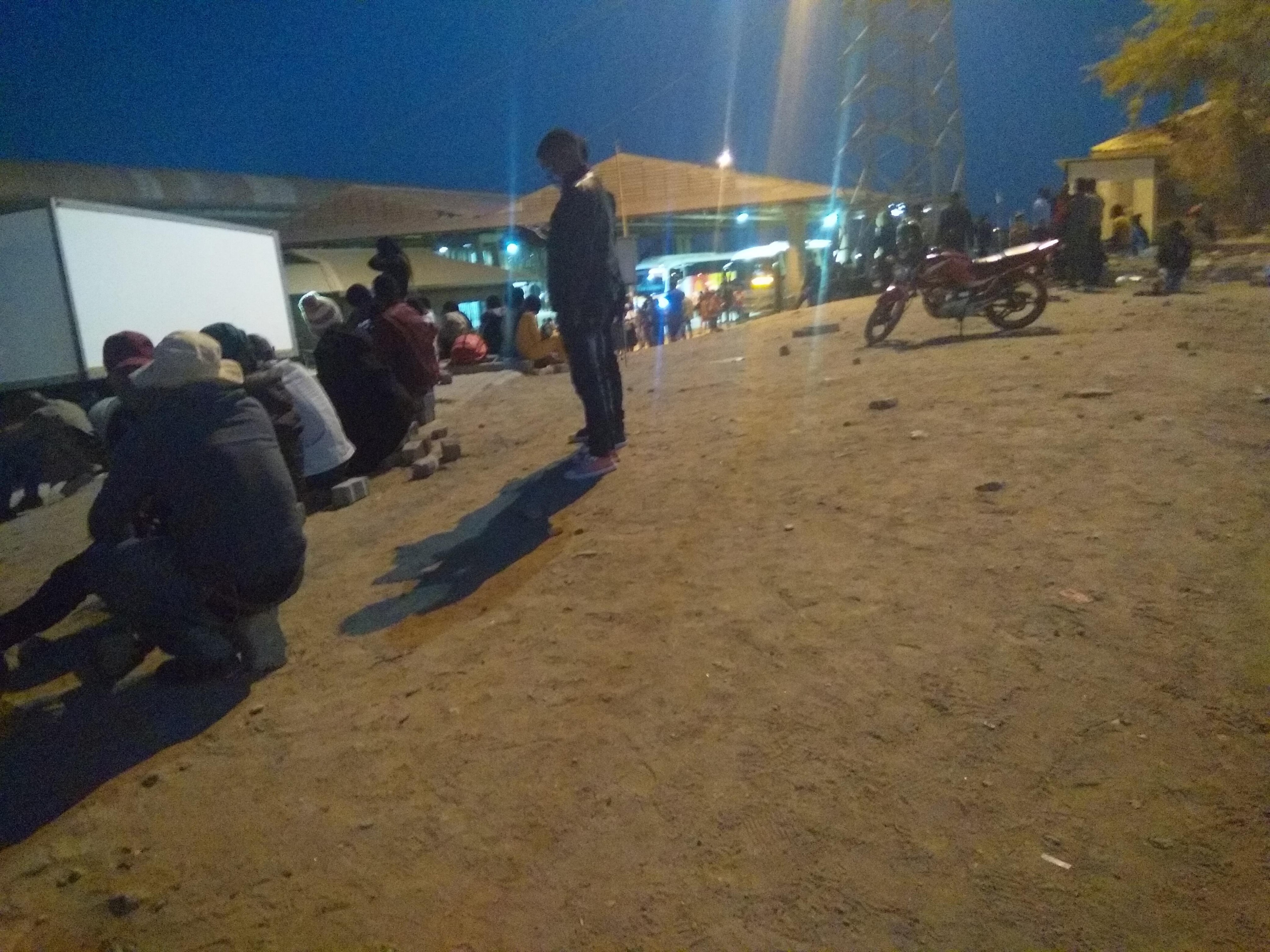
On the other side was a line of trucks that were crossing the border and for the 2 hours, we were waiting for the bus to be inspected the trucks kept coming. The Zimbabwe border crossing was a bit more chaotic with people sitting around waiting for the buses to be inspected to continue their journey and the area being dusty with the heavy presence of police officers. We got into the bus to proceed with our journey in the night and most of our journey in Zimbabwe was at night. As we left the immigration station the road was quite bad with a number of diversions that seemed to go on forever. We made one stop in Harare at the Intercape Harare office for a bit of leg stretching and a bathroom break. So far we were 14 hours into our journey with another 22 hours to go and 2 countries to cross into.
Sunrise and we were north of Harare on a tarmac road heading to the border with Mozambique. It was a wooded area with hills, villages and baobab trees, lining the road as we wound our way further and further away from Harare towards the Nyampanda border point. Didn’t see too much of Zimbabwe especially due to most of it was night travel but the scenery towards the border town was quite scenic.
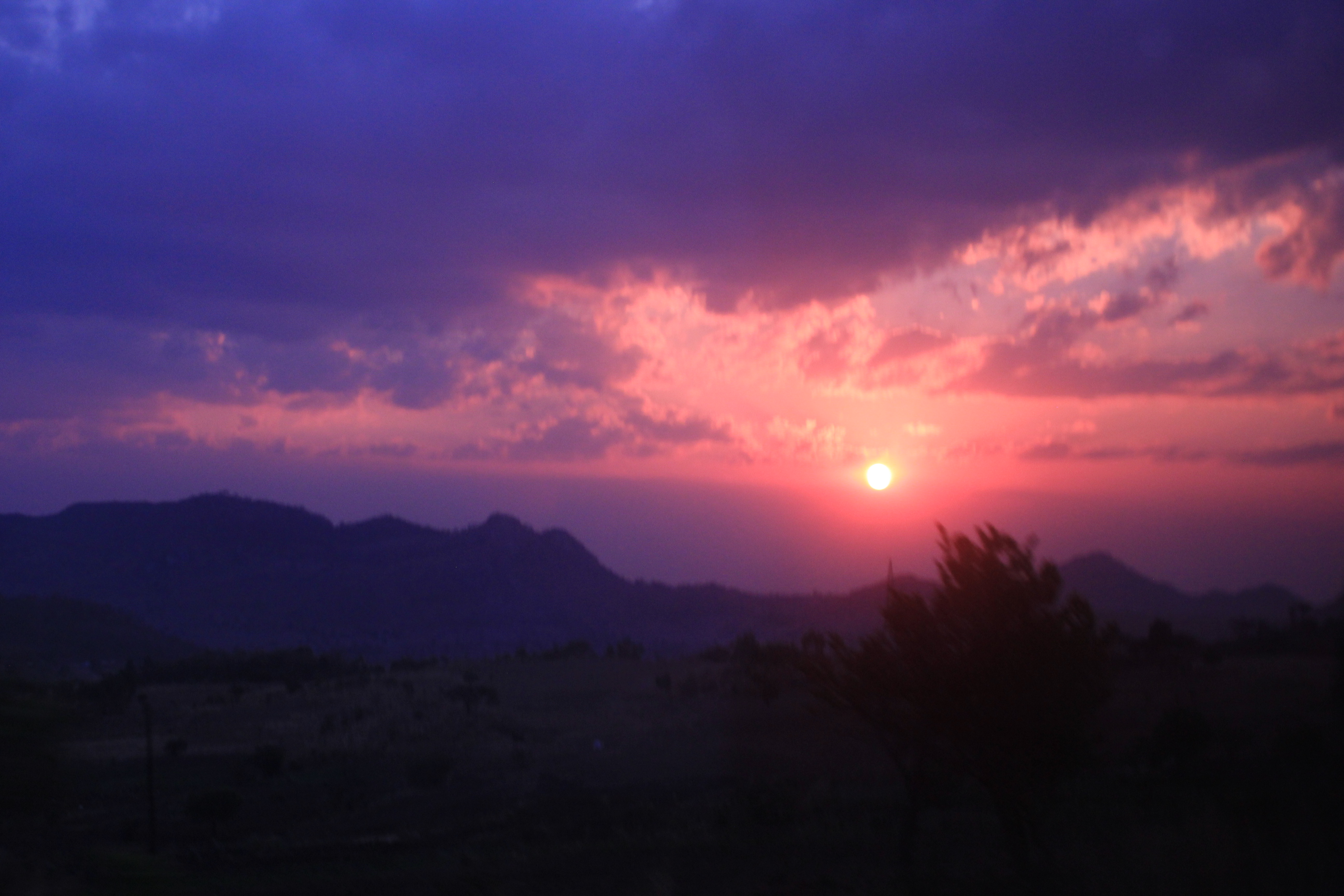
The Zimbabwe – Mozambique border was a tat bit underwhelming as it was just a barrier on the road with vehicles parked on the side of the road. Reminded me of crossing through to Uganda at Busia over 18 years ago. So we got out of the bus around 9.30am and carried our rucksack and filed into the Zimbabwe side to be stamped out. From here we walked the short stretch to the Mozambique side to be stamped in. As usual, we were given a declaration form on entry to ask how long our intended stay in Mozambique was. We filled in all our details gave in our passports and were stamped into Mozambique our 3rd country to travel through. Mozambique is a very big country and our bus was crossing through the northern province, the Tete Province. Tete Province is reported to have great coal deposits with over 6.7 billion tonnes and is rumored the province could produce 25% of the world’s coal by 2025. In the same province we crossed our second big river after the Limpopo, the Zambezi river which I do remember from GHC and Geography in Secondary school.
Mozambique’s Tete province is sparsely populated and with few villages that can be seen from the road. The road is tarmacked and okay with a landscape resembling our savannah with rolling hills in the distance. There have been mass resettlements in this province as different mining companies move in to begin mining the coal available. Tete province also has the Cahora Bassa Dam is the largest hydroelectric power plant in southern Africa and the most efficient power generating station in Mozambique.
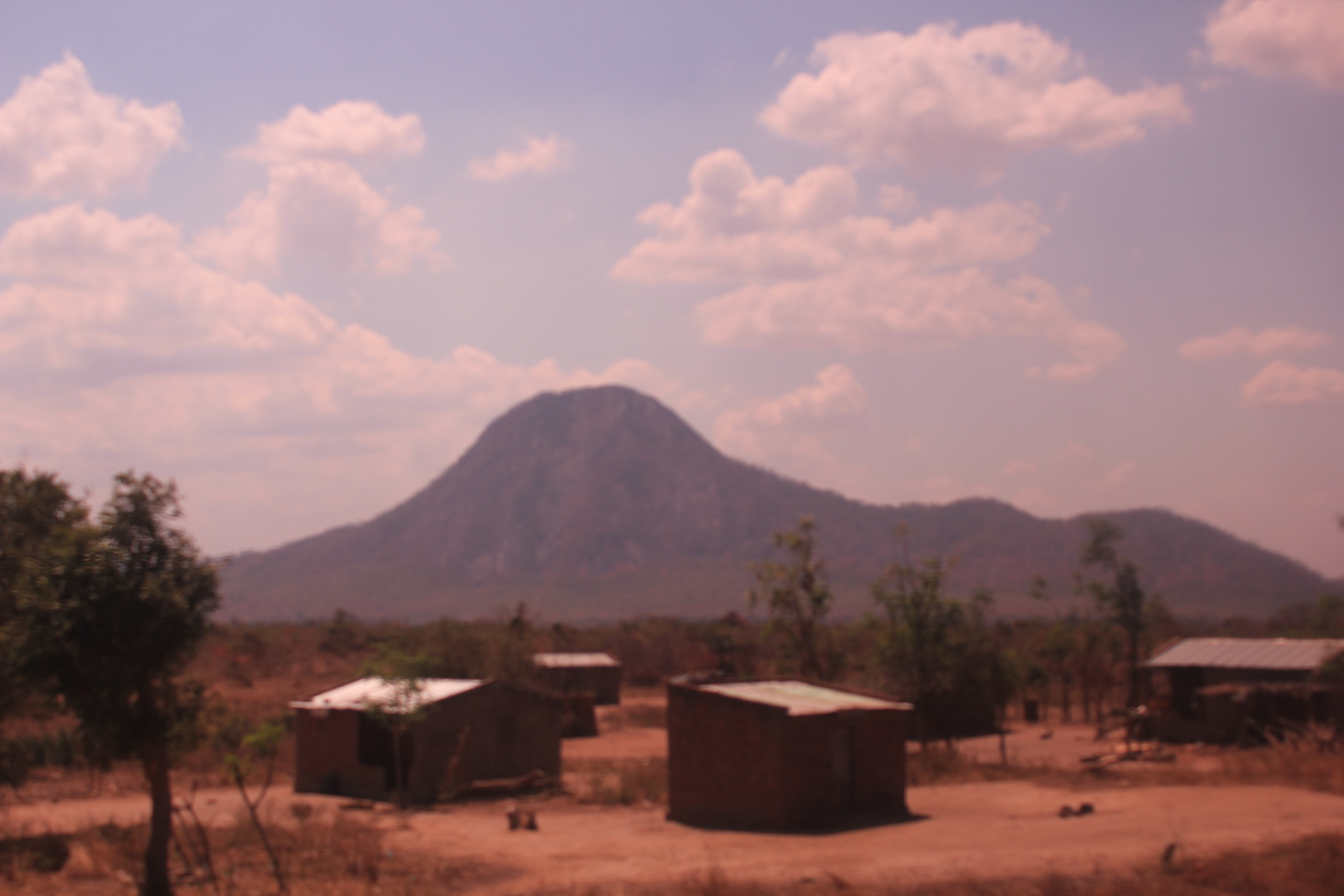
We were now on the road towards the Dedza border point between Mozambique and Malawi having traveled for 7 hours across Mozambican territory. So we got the Dedza border point and we all trouped out of the bus to the immigration office to get our passports stamped. As usual, we filled our exit forms and filled in one by one to get our passport stamped. When it was our turn the guy at the counter referred our passport to his colleague who was sitting at the desk…the boss. The boss had a look at our passports then came to the counter and called us aside. He said he was to send us back to point of entry since we didn’t get a Mozambique visa which was 7 and a half hours in the opposite direction. We did inform him that we were duly stamped in, but he would hear none of it and was still threatening to detain us and put us on the next bus taking us to the point of entry. After 15 minutes of pleading, he said we had to get a visa and each was 50USD, dismissing the fact that Kenya & Mozambique had signed an agreement exempting us from requiring a visa. He said 2 years later the agreement had not been implemented in Mozambique.
So he allowed us to cross to the Malawi border side to find the cash since we had it on a Visa card. We explained the situation to the conductor who graciously gave us his phone and we got into contact with a friend who was based in Blantyre. After explaining the situation she sorted us out and after withdrawing the cash and converting it we crossed back to the Mozambique side with the bus agent to sort out the situation. We got back to the immigration office again and started the process of applying for the visa. So, the immigration boss took our passports and sent the bus agent to go photocopy them. As we were waiting, we started talking about our families and respective countries and we became friends. He told us about his family, Tete province, Mozambique and how he has always wanted to come visit Nairobi but hadn’t gotten the chance just yet. He was quite impressed that we were going back to Nairobi from Johannesburg by bus and that we were getting a unique opportunity to see Africa up close.
So the bus agent came back with our passports and the photocopies. The immigration guy proceeded to stamp them and the photocopies, handed us our passports and the 100USD and sent us on our merry way wishing us all the best in our journey ahead. 2 and a half hours later we crossed into Malawi, having been saved by the fact that the bus was still clearing customs on the Malawi side. We went to the Malawi immigration office, and after filling in the entry form were stamped into Malawi. Customs check on the bus took another 30 min and we took the opportunity to sample some local cuisine which was chicken and some fries made by the roadside in some interesting looking oil. The stomach prevailed though, and we dug into so well needed comfort food. The remainder of the journey from Dedza to Lilongwe was quite uneventful and, in another hour, and a half we were in Lilongwe the capital city of Malawi the 4th country on this leg of the journey.
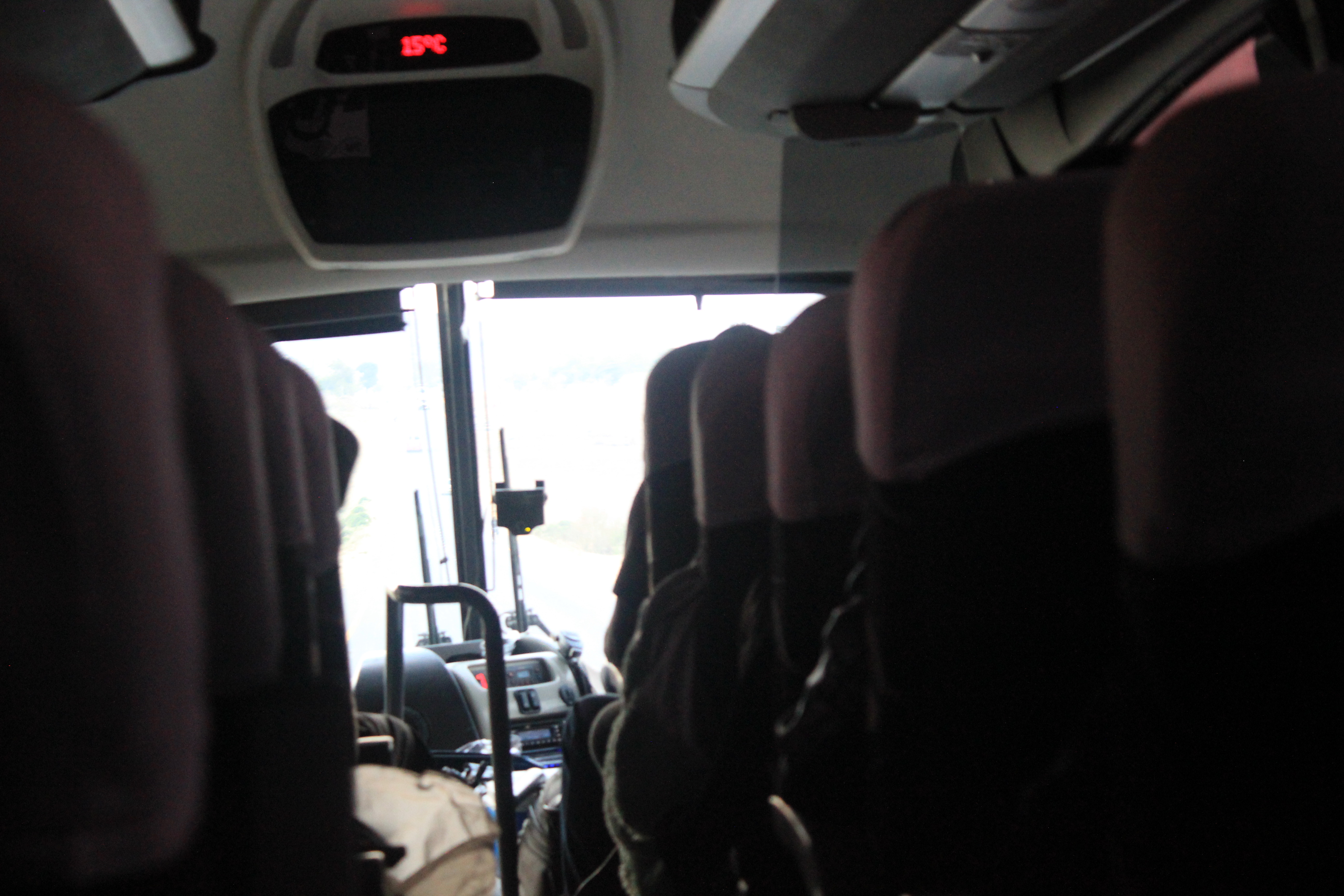
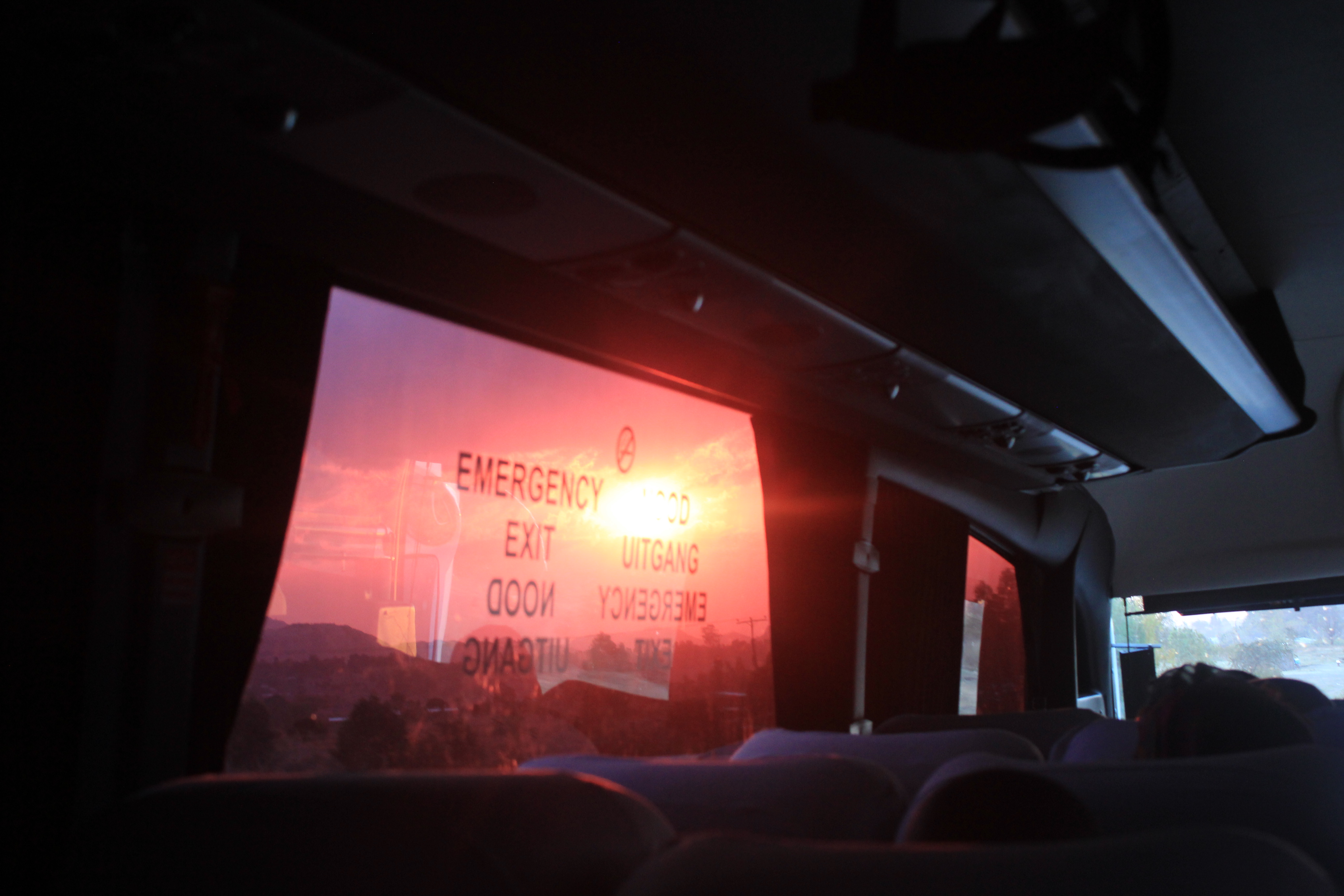
Next week – Lilongwe to Dar es Salaam by bus….




















































